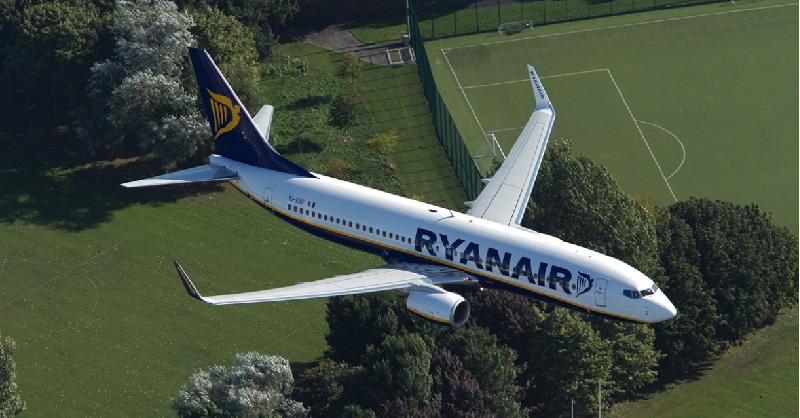RYANAIR FIRST IN EU REPORT TO MONTHLY CO2 EMISSIONS

By: Ryanair
Photo: Ryanair
Ryanair today (5 June) becomes the first EU airline to release monthly CO2 emissions statistics, which show an average of 66g CO2 per passenger/km in May 2019.
| Metrics | May 2019 |
| Total Kilometres | 17,529m km |
| Total Passengers | 14.1m |
| Total CO2 Emissions | 1,157 kt |
| CO2 Per Pax/km | 66g |
With the highest passenger load factor (96%) and one of the youngest fleets (ave. of 6 years), Ryanair delivers the lowest CO2 per passenger/km in the EU airline industry. Its current average CO2 per pax/km of 67g p.a is substantially lower than its EU competitors, and Ryanair has committed to reducing this further to under 60g per pax/km by 2030 – as outlined in its Environmental Policy (click here). Ryanair’s CO2 per pax/km has been cut from 82g to 67g (-18%) over the last decade while high fare competitors such as Lufthansa, BA and AF-KLM currently generate over 120g per pax/km.
Ryanair’s environmental commitment includes an investment of over US$20 billion in a fleet of 210 new Boeing 737 “gamechanger” aircraft, delivered between 2019 and 2024, which will carry 4% more passengers, but with 16% lower fuel burn and 40% lower noise emissions.
CO2 per passenger/km is the most transparent way to accurately measure every airline operating in Europe. Ryanair will publish its monthly CO2 emissions to show its environmental commitment and calls on all other EU airlines to do the same.
Ryanair’s Kenny Jacobs said: “Ryanair is Europe’s greenest/cleanest airline. We have the youngest fleet and highest load factors, so our CO2 per passenger/km is 67g p.a (almost half the rate of other big European airlines). Over the past decade Ryanair’s CO2 per passenger/km has been cut by 18% from 82g to 67g, while competitors such as Lufthansa, BA and AF-KLMcurrently generate over 120g per passenger/km. As part of Ryanair’s environmental commitment, we will invest over US$20 billion in a fleet of 210 new Boeing 737 “gamechanger” aircraft, which will carry 4% more passengers but reduce fuel burn by 16% and cut noise emissions by 40%.”




